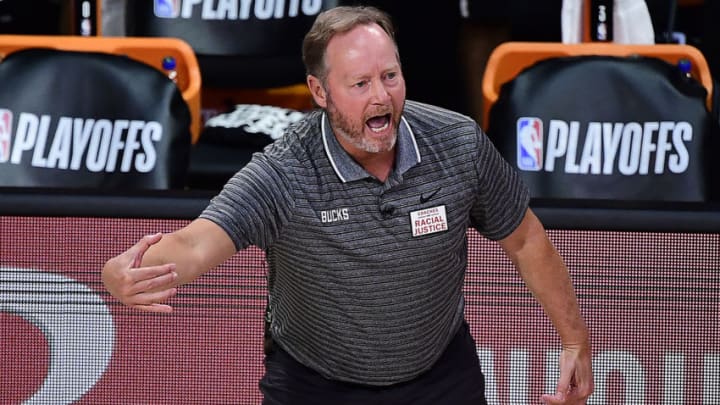If the Milwaukee Bucks want to avoid their offense growing stagnant and being easily shut down, they need to embrace off-ball movement.
Aside from the obvious difference in personnel that comes from having a back-to-back MVP in place with the Milwaukee Bucks, there’s one particularly striking difference between Mike Budenholzer’s current team and his time with the Atlanta Hawks.
Even to go back to Budenholzer’s time as an assistant coach with the San Antonio Spurs, it’s notable that an element that has been central to the teams where he’s been a part of the coaching staff is a relative weakness for Milwaukee.
More from Bucks News
- Bucks 2023-24 player profile: Can MarJon Beauchamp take a leap?
- Piecing together the Milwaukee Bucks’ dream starting 5 in 5 years
- Predicting Thanasis Antetokounmpo’s 2023-24 stats for the Bucks
- Grade the trade: Bucks land reputable backup guard in swap with Pacers
- New workout video should have Milwaukee Bucks fans excited
The element in question is the Bucks’ uninspiring off-ball movement.
For as much as Budenholzer has always preached ball movement, that has generally come hand in hand with a desire to see his players in near constant motion off the ball.
It’s this kind of commitment to movement that can produce glorious, typically Spurs-ian sequences of ball movement rather than just a simple willingness to pass the ball.
If you want to make the extra pass really hurt opposing teams, it’s crucial that off-ball movement provides frequent cutters or open shooters as targets to hit. It’s very simple, but if your offense is entirely in front of an opponent, it’s much easier for the defense to find ways to neutralize it.
That played out in the Eastern Conference Semi-Finals as the Bucks were eliminated by the Miami Heat, who successfully walled off Giannis Antetokounmpo’s path to the rim and slowed Milwaukee’s offense to a halt along with it.
The problem for the Bucks is that they didn’t make it any easier for their star player in those situations.
Budenholzer’s philosophy of having his players fill four quadrants behind the three-point line to maximize spacing is well-established at this point, and predates his time in Milwaukee too. The issue is that when players are simply standing in those spots, it represents more of an illusion of spacing than the real deal itself.
Instead, Milwaukee’s players should be rotating in tandem, frequently cycling through those spots, pulling their defenders with them, and creating the opportunity for mismatches or defensive breakdowns.
With the halfcourt offense truly in motion, it becomes so much more difficult for a team to simply set up camp and send bodies to create a wall, as the passing options beyond them must be taken seriously.
It doesn’t negate the need for better shooters or halfcourt playmakers, but it does ensure a fair share of easy scoring opportunities throughout the game.
Whether Budenholzer has opted against stressing such extensive off-ball movement in Milwaukee or the players have simply failed to deliver on that front is impossible to know.
But the relentless movement and running off of screens that Kyle Korver offered the Bucks, something which he also brought to Budenholzer’s teams in Atlanta, should act as a blueprint for something Milwaukee needs more of.
Maybe that requires improved conditioning, or even simply younger players than the veteran heavy squad the Bucks boasted last season.
One way or another, though, the Bucks can no longer afford to stand statically around the perimeter as they fail to find a breakthrough offensively. Milwaukee’s players need to move much more readily, and if they do that, the offense should instantly become less predictable.
